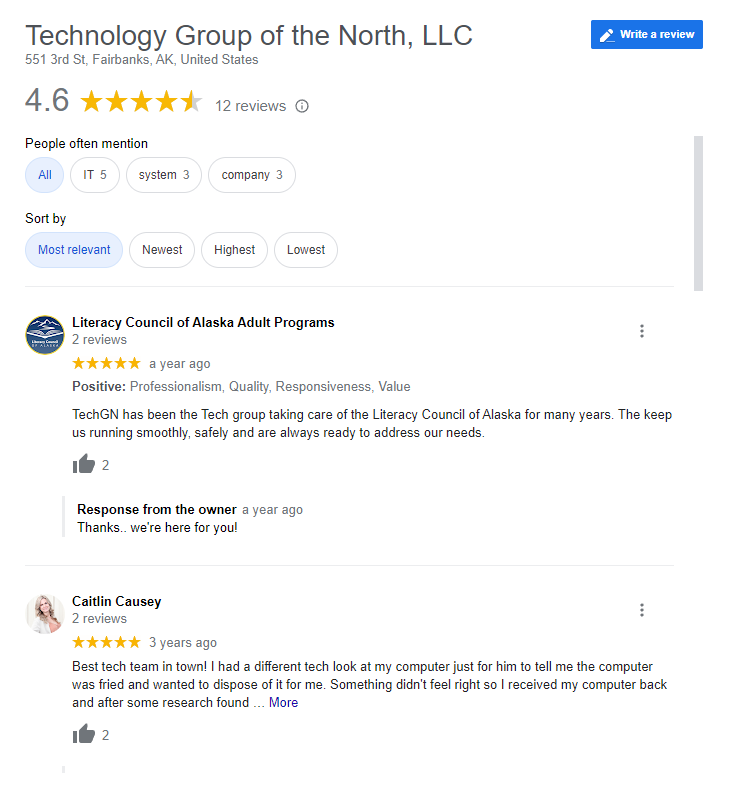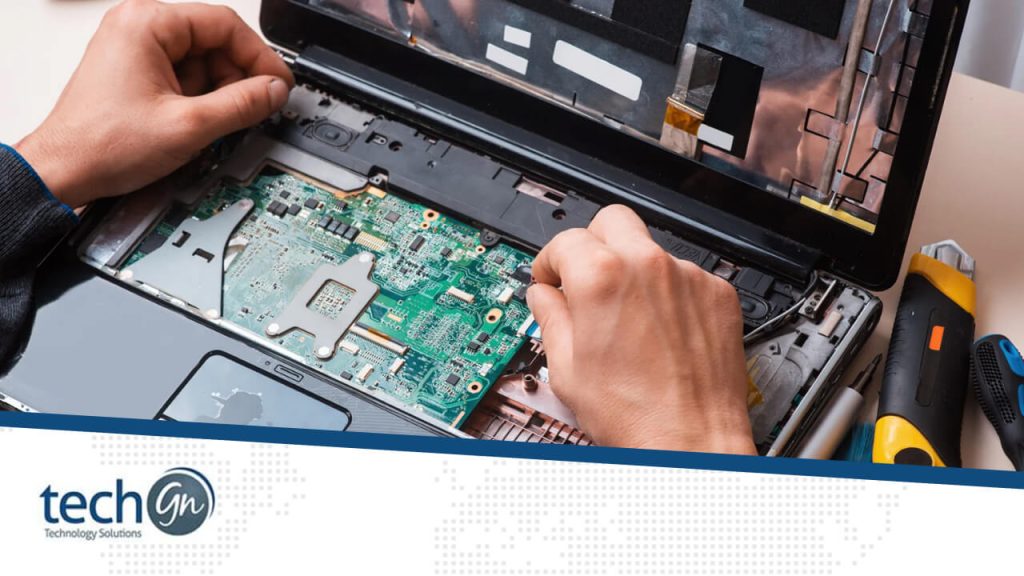In today’s fast-paced work environment, your business computers are more than just machines—they’re the backbone of daily productivity. From running point-of-sale systems to managing databases and supporting hybrid teams, your hardware must keep up with your workflow. But how do you know when it’s time to upgrade a device versus when it’s better to replace it entirely?
At TechGN, we help small and medium-sized businesses (SMBs) make smarter technology decisions. In this guide, we break down the computer life cycle, highlight key signs it’s time for a change, and share best practices for managing your business IT hardware for the long haul.
What Is the Life Cycle of a Business Computer?
A computer life cycle refers to the entire lifespan of a device, from purchase and deployment to its eventual retirement and replacement.
The average life span for a business desktop or laptop is about 3–5 years. However, with smart planning and regular maintenance, that timeline can be optimized to:
- Reduce downtime
- Control costs
- Ensure security
- Boost productivity
A proactive approach to life cycle management includes regular upgrades, performance monitoring, and knowing when to let go of outdated tech.
The 5 Stages of the Computer Hardware Life Cycle
- Procurement / Deployment
Choosing the right hardware for each team member and setting it up for use. - Active Use / Optimization
Regular maintenance, updates, and support to keep performance high. - Performance Decline / Wear & Tear
Gradual slowdown, hardware aging, and software incompatibility over time. - Repair or Upgrade Decision Point
Evaluate whether to upgrade parts (RAM, SSD, battery) or replace the entire unit. - End-of-Life / Retirement
Securely wipe, recycle, or donate old devices and replace them with new hardware.
Signs It’s Time to Upgrade or Replace a Business Computer
1. It’s Slowing Down—Even After Cleanup
If basic tasks like launching apps, browsing the web, or running productivity software feel laggy—even after virus scans and system cleanups—it could be a sign your hardware can’t keep up.
Upgrade Tip: Consider installing more RAM or switching to a solid-state drive (SSD).
Replace if: The processor is outdated or the cost of upgrades exceeds 50% of a new device.
2. Outdated Operating System or Software Incompatibility
Can’t upgrade to the latest Windows or macOS version? Are newer apps crashing or unavailable?
This means your hardware may no longer meet the minimum system requirements.
Upgrade Tip: Upgrade your OS if possible and install patches.
Replace If: Your computer no longer supports modern security protocols, like TPM 2.0 (required for Windows 11).
3. Frequent Crashes or Blue Screens
Unexplained restarts, freezing screens, or frequent blue screen errors (BSODs) may indicate hardware failure, often the CPU, hard drive, or motherboard.
Upgrade Tip: Replace the specific faulty part, such as RAM or a hard drive.
Replace if: Issues persist despite diagnostics, or repair costs exceed 40–50% of replacement value.
4. Fan Noise and Overheating
Old thermal paste, dust buildup, and overworked components often lead to loud fans and overheating. This wears out the system faster and causes throttling.
Upgrade Tip: Clean internal components or replace the fan.
Replace if: It’s a recurring issue in older laptops or ultrabooks with poor cooling design.
5. No Longer Meets Business Needs
If your team has outgrown the computer’s processing power, multitasking ability, or display quality, it may be time to upgrade, especially for design, video editing, or engineering roles.
Upgrade Tip: Add more RAM or an external GPU (for desktops).
Replace If: Performance lags even with basic tasks like video calls or cloud apps.
Upgrade vs. Replace: How to Decide
| Scenario | Upgrade | Replace |
|---|---|---|
| Slow startup/load times | SSD or RAM upgrade | Replace if 5+ yrs old |
| Minor hardware failure (e.g., fan) | Component replacement | Replace if frequent |
| Software crashes/incompatibility | Update drivers/OS | Replace if unsupported |
| Used for new high-demand tasks | GPU or RAM upgrade | Replace if not scalable |
| Laptop battery no longer charges | Battery replacement | Replace if >3 yrs old |
Average Business Computer Lifespan by Type
- Laptops: 3–4 years (due to battery and mobility wear)
- Desktops: 4–6 years (easier to upgrade)
- Workstations: 5–7 years (built for demanding tasks)
- Thin clients / Chromebooks: 3–5 years (limited by simplicity)
At TechGN, we recommend reviewing hardware health annually, especially for mission-critical devices.
Best Practices for Managing IT Hardware Life Cycles
1. Create an Asset Inventory
Log serial numbers, purchase dates, and warranty status for all computers.
2. Set a Replacement Schedule
Plan to replace devices every 4–5 years, with staggered rollouts to spread costs.
3. Perform Annual Health Checks
TechGN offers yearly PC performance assessments to help you plan future upgrades.
4. Standardize Equipment
Use uniform hardware models across your company to simplify maintenance and bulk purchases.
5. Automate Updates and Patches
Ensure all computers run the latest antivirus, firmware, and OS patches for performance and security.
6. Recycle Responsibly
TechGN helps securely wipe old drives and recycle hardware in compliance with local regulations.
How TechGN Helps You Maximize Computer ROI
Upgrading or replacing computers isn’t just about performance—it’s about protecting productivity and reducing long-term IT costs.
Here’s how we support SMBs like yours:
- Hardware diagnostics and recommendations
- Professional upgrade/installation services
- Asset tracking and reporting
- E-waste recycling and secure data destruction
- Ongoing IT support for day-to-day performance
Whether your devices need a second life or a fresh start, TechGN makes the process seamless and strategic.
Ready to Assess Your Hardware?
Let TechGN help you evaluate your current systems and recommend the smartest upgrade or replacement plan for your business.
Visit techgn.com/business-hardware-solutions
Schedule a free consultation with our hardware experts.
TechGN – Smart IT decisions. Scalable results. Trusted by growing businesses.
Reviews
Tailoring Solutions


